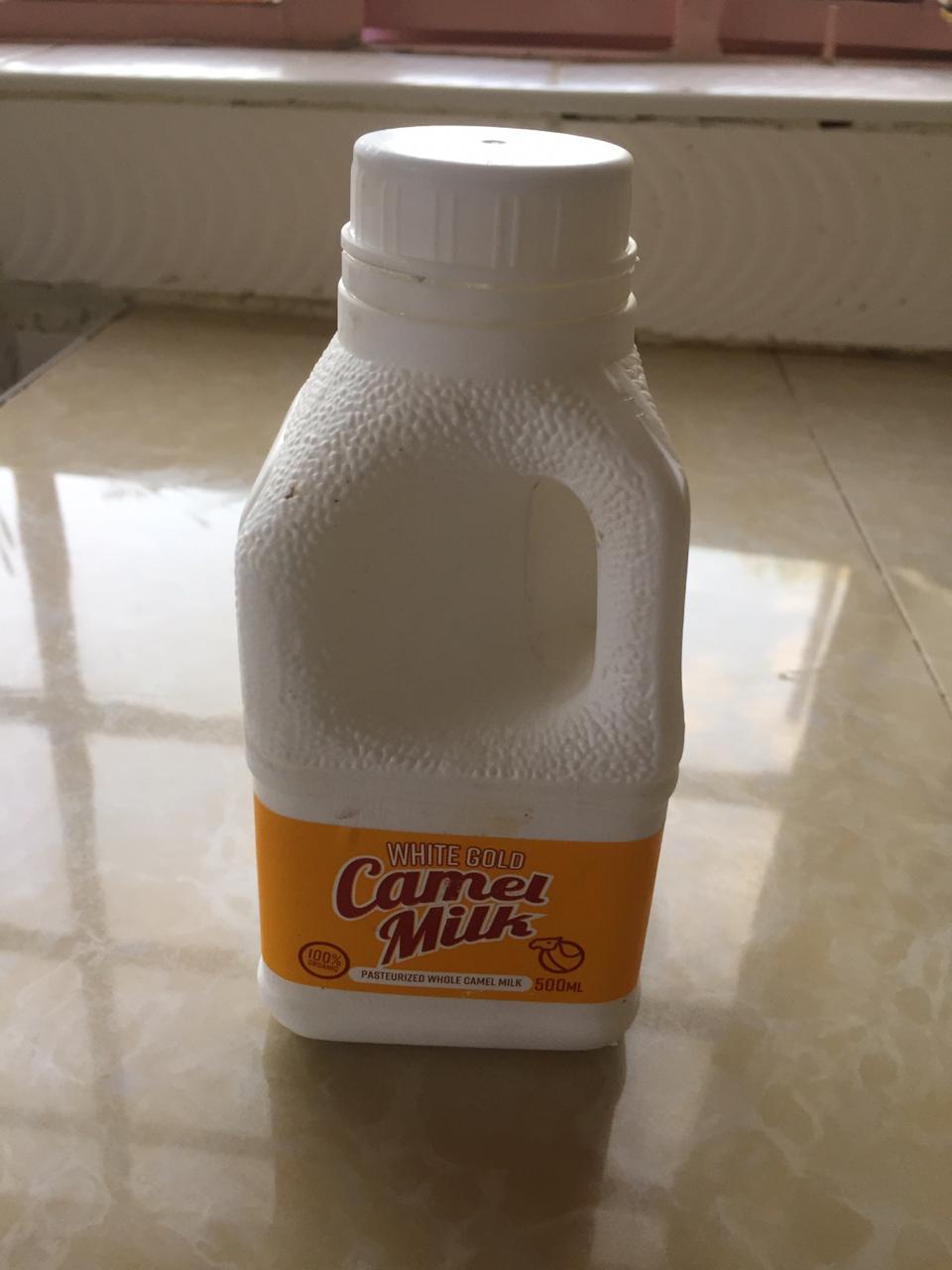 Man milking camel (AFKTravel)
Man milking camel (AFKTravel)
A lawyer cum agro-entrepreneur is banking on the nutritious value and uniqueness of camel milk from other ruminant’s milk, builds WhiteGold, a camel milk processing factory in Nanyuki which has since offered market for over 20 farmers in the area.
Jama Warsame who is a holder of bachelor’s degree in Law from University of Georgia and MBA graduate in Strategic Management from Kennesaw State University started the company in April this year after the collapse of Vital, a giant camel milk processor in Laikipia County.
“When the company died, so many farmers were affected including my mother-in-law who was one of the main suppliers of camel milk to the firm. Given the health and nutrition benefits of the milk and the lack of market for the farmers, I decided to set up the factory to revive the market and improve nutrition,” said Warsame.
According to Medicinal value of camel milk and meat study published by Journal of Applied Animal Research on 28 Jul 2017, camel milk and meat are good source of nutrients for the peoples living especially in the arid and urban areas.
RELATED ARTICLE: Health conscious middle class drives fanatical uptake of camel products

GoldWhite camel milk. Photo courtesy.
Camel milk has low cholesterol, high minerals (sodium, potassium, iron, copper, zinc and magnesium) and high vitamin C when compared with other ruminant milk. It contains various fatty acids, enzymes and protective proteins. Camel milk has potential therapeutic effects, such as antibacterial, antiviral, antidiabetic, anti-ageing and anticarcinogenic.
Warsame says the medicinal properties of camel milk can be attributed to the wide range of vegetation the animal feeds on hence has protective proteins, which may possibly play a pivotal role for the enhancement of immune defence mechanism.
Since its inception about six months ago, whiteGold is processing 500 litres of milk a day offering a milk market for camel farmers in the region.
“So far our firm has used a total of Sh3m to train farmers whom we have contracted to supply milk to the plant. This is to ensure that the milk supplied is of the best quality,” said the 41 years old entrepreneur.
RELATED ARTICLE: Markets open up to Samburu camel milk
The company only accepts non-smoked milk which does not have any smell and is of high hygiene, said Warsame.
According to a 2016 pastoralism research, policy and practice on Antimicrobial Effect of Smoking Milk Handling Containers’ Inner Surfaces as a preservation method in pastoral systems in Kenya, pastoral communities in Kenya have used smoke from specific herbs as a technique of disinfecting milk-handling containers, preserving milk and to impart a characteristic desired flavour to raw camel milk.
The smoking is expected to extend the shelf life of the camel milk, despite the high environmental temperatures (>28 °C).
Warsame now sets sights on making WhiteGold as Nanyuki hub of camel milk and extends its reach up to the East Africa region and beyond.
“I know this may not be easy but with investors and support from the county and national governments we can achieve this faster than expected and offer market for camel farmers and improve nutrition of our people.”
RELATED ARTICLE: Camel project protects women pastoralists in dry spells
Camel milk production in Kenya is estimated at 937,000 tonnes in 2013, valued at about Sh11bn (108 million US Dollars), according to Food and Agriculture Organization of the United Nations. This quantity of milk represents about 19 per cent of the national Kenyan milk production.
Therefore, camel milk contributes to food security and economic livelihoods of communities in the arid and semi-arid lands (ASAL) in Kenya.
Warsame sells his milk to the supermarkets, carrefours and supplies to Karen and Kayole in Nairobi. A half a litre goes for Sh130 and he is yet to introduce a litre and two litres which will sell at ShSh250 nad Sh500 respectively.
Analysis of current camel milk value chain indicates that only 12 per cent of the milk is marketed, the bulk of which is sold in raw form to rural consumers (10 per cent), and only two per cent reaches urban consumers.
Of the remaining milk (88 per cent) that does not reach the market, 38 % is directly used by camel-keeping households and their herders as part of their food requirements and the remaining 50 per cent goes to waste.
Write comment (0 Comments)



 Poultry, dairy, banana and fish farmers from Murang’a County are set to improve their production courtesy of Sh200m fund by World Bank. This will save the farmers from poor farming methods which has led to low food production causing some parts of the county to rely on relief foods in the recent past.
Poultry, dairy, banana and fish farmers from Murang’a County are set to improve their production courtesy of Sh200m fund by World Bank. This will save the farmers from poor farming methods which has led to low food production causing some parts of the county to rely on relief foods in the recent past. Damliner (Photo/flickr.com)
Damliner (Photo/flickr.com)










